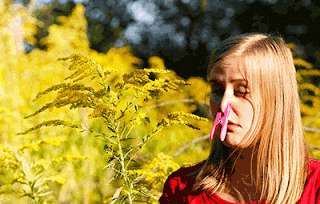Allergies – the odd balls in the group!
We are all familiar with the more common allergens – pollen,
dust mites, molds, pet dander and food. If you’re reading this post you are
probably allergic to at least one of the above.
Here a couple of allergens you are probably not familiar with – the odd
balls in the group.
No leather shoes for me!
If you find a rash on your feet after wearing leather shoes,
you might be allergic to the chemicals used during the leather tanning process.
Contact dermatitis, a form of eczema, is
a cornucopia for all common skin conditions resulting from direct contact with an
irritant or allergen. More than five
million doctor visits every year can be attributed to its red, rash outcome.
The solution? Wear shoes that are not made
from leather.
No baths for me – a little boy’s favorite words
Even though we need water to survive, there are some people
who get hives or red welts from water. This is known as aquagenic urticarial. Even though it is described as an allergy, it
is not a true histamine-releasing allergic reaction. The condition usually last 15 to 30 minutes. The
hives are very itchy. No one can pin point why some people are allergic
to water and it is a very rare type of allergy.
Exercise – or allergy time?
Exercise allergies were first reported in the 1970s. There seems to be two types of exercise
allergies. One is caused from eating
food within two hours of working out and the other happens without eating any
food. Symptoms go from mild hives and
welts to severe anaphylasix, with a massive drop in blood pressure and trouble
breathing. Both can be determined by a
doctor. If it’s the food related allergy
you can easily fix that by not eating before you exercise.
To charge or not to charge?
Yes, believe it or not there are people who think they are
sensitive to electrical fields generated by computers, cell phones, microwaves,
power lines and light switches. Symptoms can include ringing in the ears, headache,
fatigue, and other complaints. But studies have shown this is probably one type
of allergy you don’t have to worry about.
Almost all the tests have come up empty on proving electrical fields can
cause allergy like symptoms.
Keep the change!
For some people handling coins can cause another type of
contact dermatitis. Most likely it is a reaction to nickel, a metal mixed with
other metals to form an alloy. Nickel is
used in jewelry, zippers, eye glass frames and coins. People who are sensitive can develop rashes
where ever the metal comes in contact with their skin. As with all allergens that cause contact
dermatitis, red rashes and itching, the best treatment is to avoid whatever is
causing the condition.
Remember, allergies are the result of our body’s defense
system overreacting to foreign particles. Help build your immune system with Allergy
Drops through Sublingual Immunotherapy. Allergena has developed allergy drops
for where you live!




































